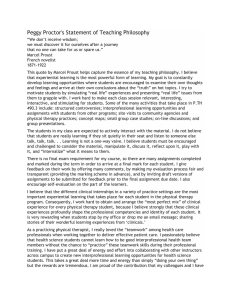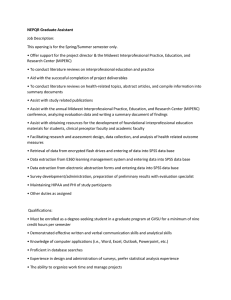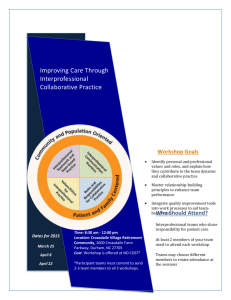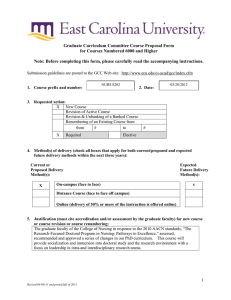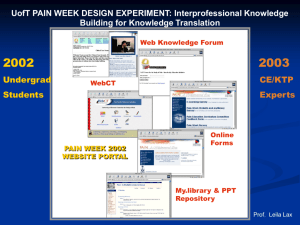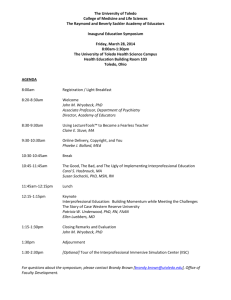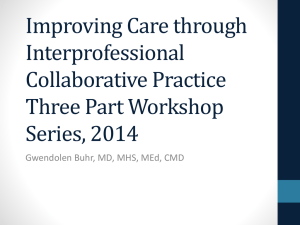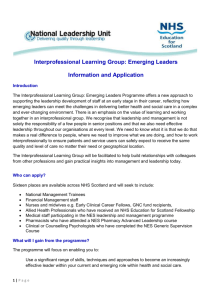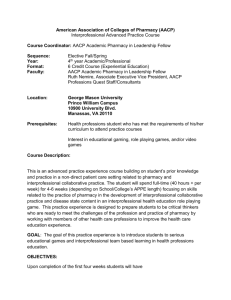here - Rational Prescribing
advertisement
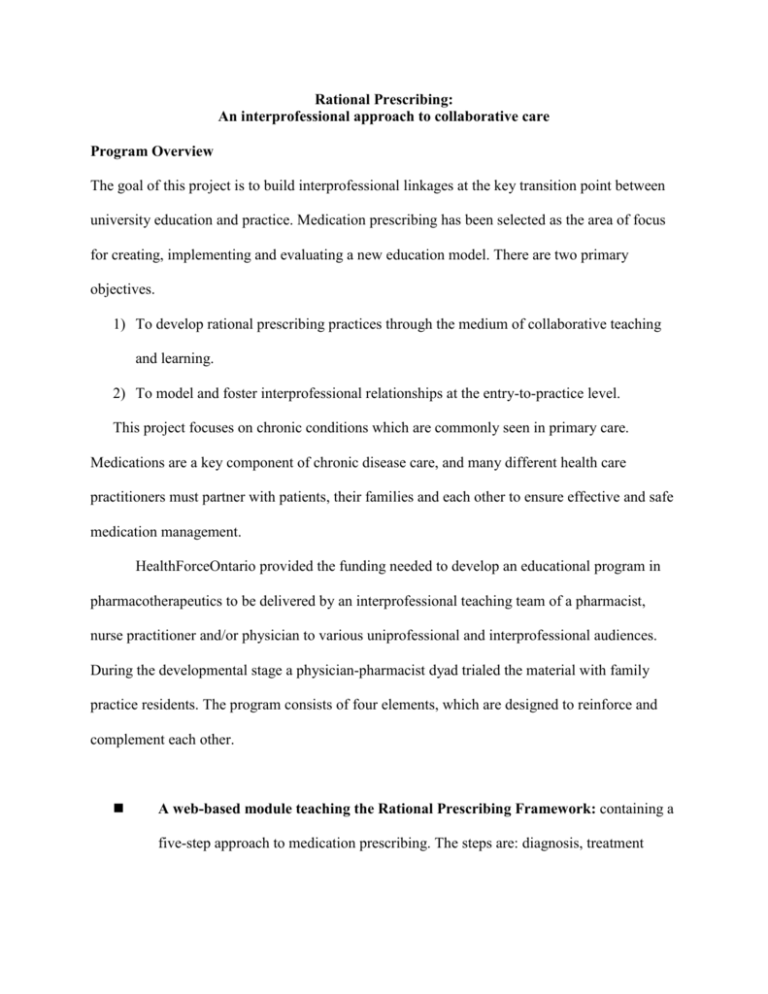
Rational Prescribing: An interprofessional approach to collaborative care Program Overview The goal of this project is to build interprofessional linkages at the key transition point between university education and practice. Medication prescribing has been selected as the area of focus for creating, implementing and evaluating a new education model. There are two primary objectives. 1) To develop rational prescribing practices through the medium of collaborative teaching and learning. 2) To model and foster interprofessional relationships at the entry-to-practice level. This project focuses on chronic conditions which are commonly seen in primary care. Medications are a key component of chronic disease care, and many different health care practitioners must partner with patients, their families and each other to ensure effective and safe medication management. HealthForceOntario provided the funding needed to develop an educational program in pharmacotherapeutics to be delivered by an interprofessional teaching team of a pharmacist, nurse practitioner and/or physician to various uniprofessional and interprofessional audiences. During the developmental stage a physician-pharmacist dyad trialed the material with family practice residents. The program consists of four elements, which are designed to reinforce and complement each other. A web-based module teaching the Rational Prescribing Framework: containing a five-step approach to medication prescribing. The steps are: diagnosis, treatment modalities (including non-drug), selecting the best drug, write the prescription and develop a monitoring plan. A web-based module on patient education: providing information and practical hints on communicating with patients about their medication. Six web-based clinical modules: Modules have been developed for asthma, diabetes, antibiotics, chronic pain, depression and hypertension. The web prepares learners for a live, interprofessional training session. The online clinical module includes the following elements: o a pre-test designed to engage the learners and highlight gaps in their knowledge, o basic information on normal and abnormal physiology o information on the range of drugs (from common to rare) available to treat the condition. It includes how and where drugs work and the different classes including dosing, side-effects and monitoring requirements. A live in-class seminar to be presented by an interprofessional team. This includes a clinical case, an activation exercise and an interactive discussion supported by a slide deck. To train future interprofessional teaching teams a Facilitators’ section has been created and posted online. The toolkit section includes short videos on co-teaching, working with cases, conducting an activation exercise and more. The in-class seminar section contains all the materials required for the live seminar.

